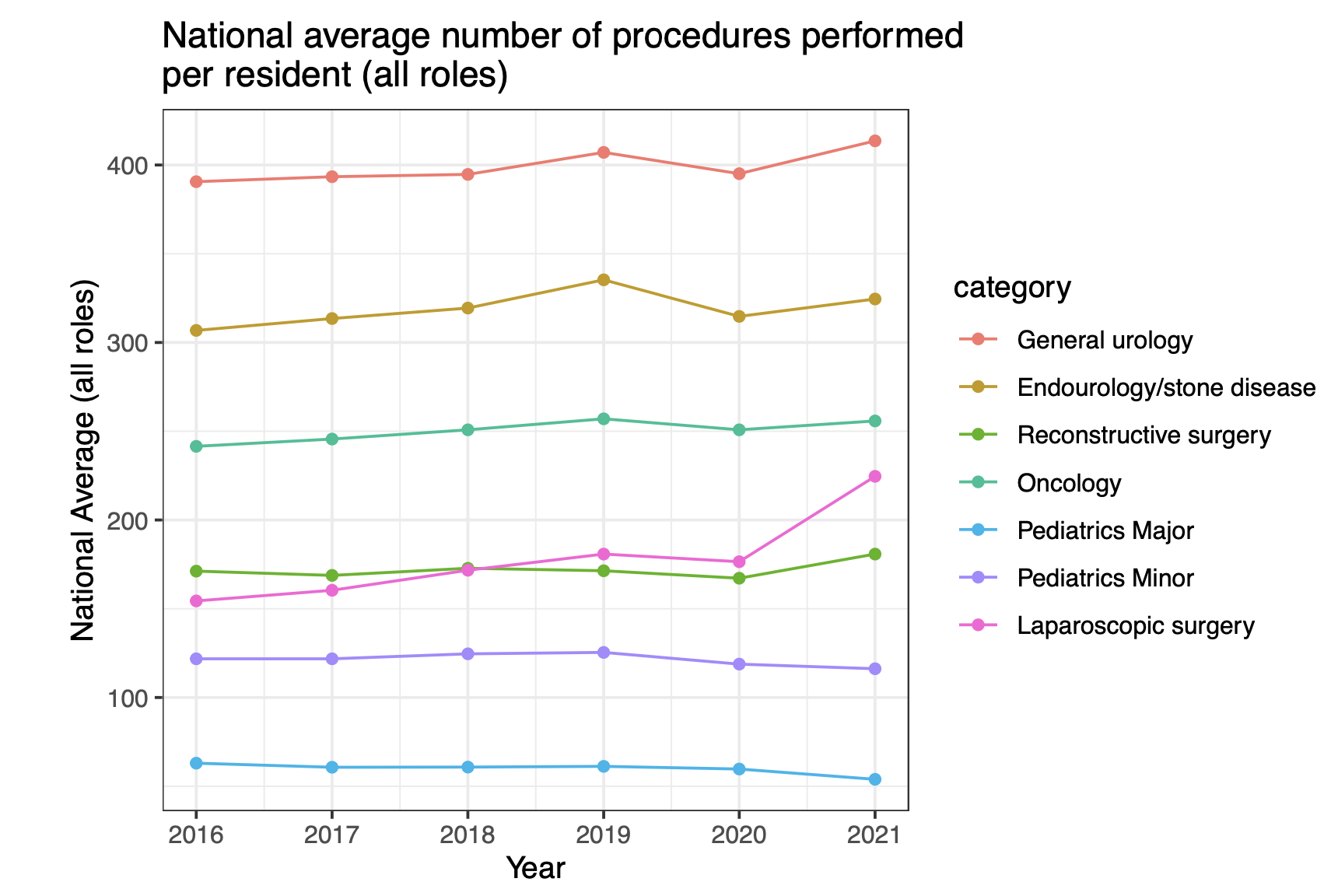Back
Poster, Podium & Video Sessions
Podium
PD30: Education Research III
PD30-09: Impact and Implications of the COVID-19 pandemic on Urologic Training
Saturday, May 14, 2022
2:20 PM – 2:30 PM
Location: Room 243
Brandon Piyevsky, Dayton, OH, John Maclean*, Anqing Li, Stephen Rhodes, Megan Prunty, Erin Jesse, Anood Alfahmy, Ramy Abou-Ghayda, Michael Zell, Michael Callegari, Cleveland, OH
- JM
Podium Presenter(s)
Introduction: The COVID-19 pandemic has impacted many facets of healthcare in the United States. Changes in public health and hospital policies led to changes in the surgical care of patients and caused disruptions in medical training. Currently, there is limited understanding of how significantly the pandemic impacted urology resident education across the U.S.. The aim of this project is to examine the trends in urologic procedures, as captured by the Accreditation Council for Graduate Medical Education (ACGME) performed by residents before, during and after the peak of the COVID-19 pandemic.
Methods: A retrospective review was performed of publicly available urology resident case logs between July 1 2016 and June 30 2021. Cases were divided into subcategories defined by ACGME and analyzed with linear regression models using year and category as predictors. Statistical calculations were conducted using R (version 4.0.2).
Results: Statistical analysis of the national average number of procedures performed by urology residents indicate an upward trend of urology cases. Starting in 2016, the national average of general urology procedures performed by residents has increased by 4-5 each year except for 2020, which saw a drop in case volume. However, in 2021 the case volume dramatically increased to the same rate as projected had there not been a disruption in 2020. The same analysis applied to other categories of urology procedures resulted in the same findings of a decrease in 2020 followed by a quick rebound in 2021.
Conclusions: Trends in ACGME urologic resident case logs suggest that despite widespread pandemic-related disruptions in surgical case volume, there has been minimal detriment to urologic resident training over time. Urologic care is essential and in high demand as evidenced by the uptick in volume across training programs within the U.S.
Source of Funding: None

Methods: A retrospective review was performed of publicly available urology resident case logs between July 1 2016 and June 30 2021. Cases were divided into subcategories defined by ACGME and analyzed with linear regression models using year and category as predictors. Statistical calculations were conducted using R (version 4.0.2).
Results: Statistical analysis of the national average number of procedures performed by urology residents indicate an upward trend of urology cases. Starting in 2016, the national average of general urology procedures performed by residents has increased by 4-5 each year except for 2020, which saw a drop in case volume. However, in 2021 the case volume dramatically increased to the same rate as projected had there not been a disruption in 2020. The same analysis applied to other categories of urology procedures resulted in the same findings of a decrease in 2020 followed by a quick rebound in 2021.
Conclusions: Trends in ACGME urologic resident case logs suggest that despite widespread pandemic-related disruptions in surgical case volume, there has been minimal detriment to urologic resident training over time. Urologic care is essential and in high demand as evidenced by the uptick in volume across training programs within the U.S.
Source of Funding: None


.jpg)
.jpg)